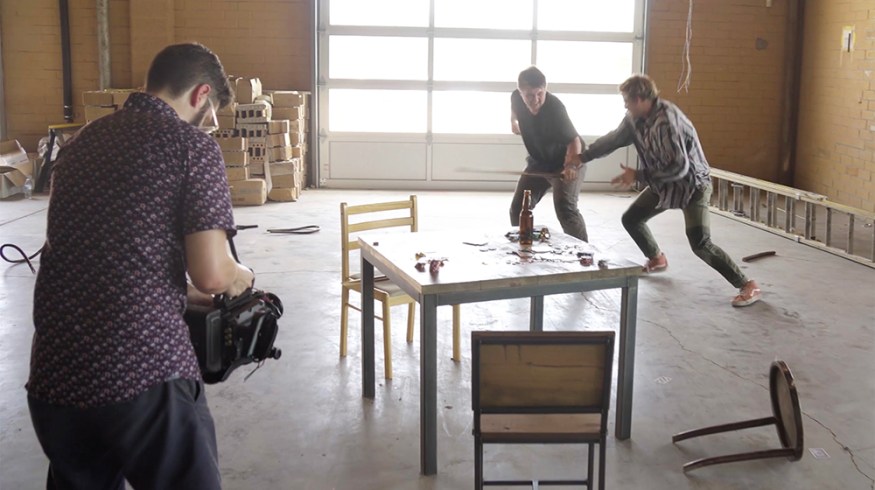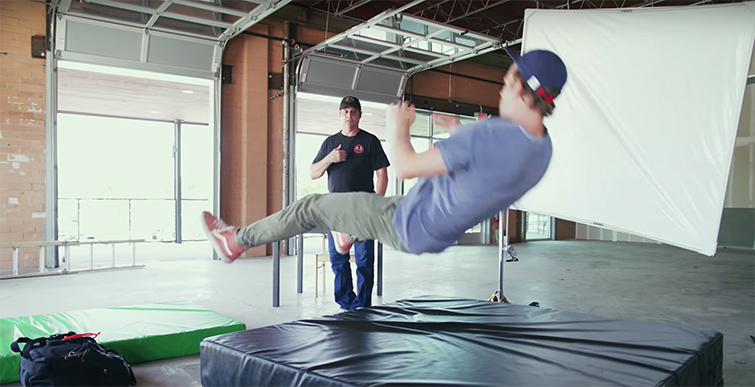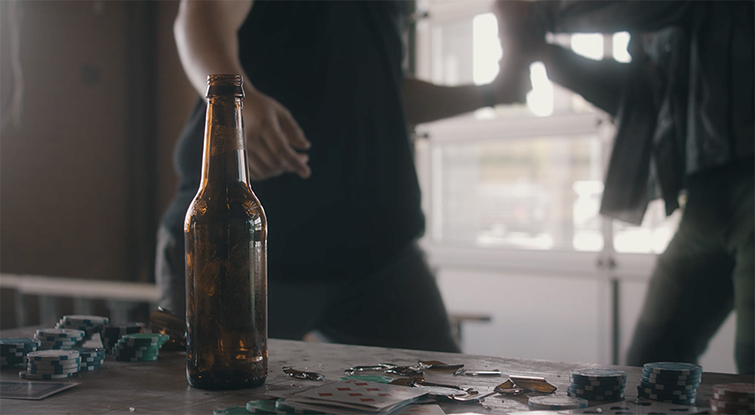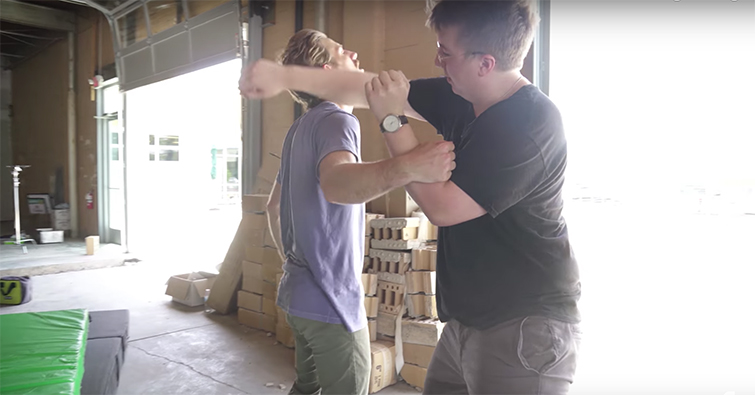
Choreographing A Fight Scene With A Hollywood Stunt Man
Trying to pull off a realistic fight scene? Learn from a professional stuntman how to choreograph a fight sequence and translate those stunts to the camera.
If you are anything like me, you grew up wanting to be a stunt performer in a big blockbuster action movie. It seems like such an awesome life to dream about. Jumping off buildings all day and beating up bad guys isn’t too bad of a gig. So, we decided to live out our childhood fantasies of becoming stuntmen. We hired John Cann of Action PAC stunts to come teach us how to create a typical fight scene. From punching for the camera to effective throws, John went through and taught us all of the basics of stunt work, which we’re going to share with you today.
Punching for the Camera
Now there’s a few fundamentals you need to remember when punching for the camera.
Keep the phrase on target, out of distance in the back of your mind when doing stunt fighting. This means that your punches should be on target (the face, body, wherever you may be aiming), while maintaining a healthy distance from your opponent. Punches should never make contact on set. Since you’re working with a 2D space through your camera’s lens, you need to frame the punch correctly in order to sell the hit.
Don’t forget to maintain eye contact. When you have a choreographed fight scene with another actor, maintaining eye contact is incredibly important for both participants. Eye contact will help you anticipate their movements and make sure that they haven’t forgotten the choreography. When you don’t keep eye contact, you might continue on with the choreography and duck while they throw an unexpected uppercut. If you don’t see it coming it could leave you with a broken jaw.
Keeping your arms extended is where stunt fighting differs from realistic fighting. In a real life bout, you would keep your arms bent and close to your core to maintain momentum in your punches. But on camera, real punches don’t translate well. You have to reveal your arms to the camera for it to pick it up. So when you are throwing your punches, keep your arms extended out while throwing those haymakers. It may feel weird for someone who has previous boxing/fighting experience, but it will look a whole lot better on screen.
For every hit, you need to make sure that your punches “cross the plane” of the camera. Imagine that there is a pane of glass going from the middle of the camera lens to the middle of your opponent’s face. To sell a punch, your fist needs to break that pane. Crossing that plane simulates a hit. Just pair it with a sound effect and you’ve connected a punch.
Maintaining Control
When doing stunt work, the person who is at most risk of harm should always be the person in control of the situation. Take a choking stunt for example. The person getting choked should be pulling towards themselves, while the person choking should be pulling away. This is one of those tricks that doesn’t feel right when performing the stunt. But, since both actors are using muscle to pull, the flexed muscles will sell the choke. The camera can’t tell which way the force is going.
Tossing Someone Safely
Only boring fights stay upright. When you want your scene to get down and dirty, including a tossing stunt can bring gritty realism to your choreography. The one thing you need to remember for a throw is that the person getting tossed should be in control of their fall, while the tosser should only be guiding them. When someone actually gets thrown, you open yourself up for an accidental injury. Luckily we had stunt mats to practice our throws. But, you can use anything soft to practice these throws on, such as couch cushions or a mattress.
The mats are only for rehearsal. You can’t really just have a mattress conveniently laying on the floor in your scene for someone to fall on (unless your scene is in a mattress factory). You are actually going to be hitting that floor. To protect ourselves, John provided us with stunt pads to cover up the places where we would get hit. If you don’t have access to stunt pads, skating pads or even low-profile protective gear like lacrosse equipment can protect you.
Adding Props to Sell the Fight
What’s something that always ramps up the action in a fight scene? Breakable objects, of course! For our scene, we used breakaway chairs and pool cues, as well as sugar glass bottles. The breakaway chairs we used had all of the metal screws removed from the joints and replaced with wood glue and toothpicks to keep it together. The pool cues had weak points sawed into the middle so that they broke immediately when they made contact.
Sugar glass is Hollywood’s choice when it comes to glass breaking stunts. It’s an extremely brittle substance, and will break easily when it makes contact. The bottles cost about $20 each, so if you’re on a budget you can try making your own:
Putting It All Together
Your fight needs to flow, and that flow relies heavily on motivation. If someone gets punched a few times, they’ll come back swinging even harder. A scene with only punch/return punch can stagnate quickly, so ramp up the intensity as the fight carries on. You want the fight to seem like it’s life or death, and not just a quick exchanging of blows. So work with your opponent to create a dynamic scene, rehearse it multiple times, and get shooting!
Want to learn more about filmmaking? Check out these articles:












